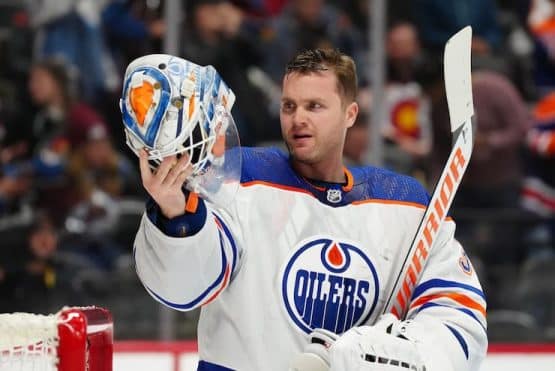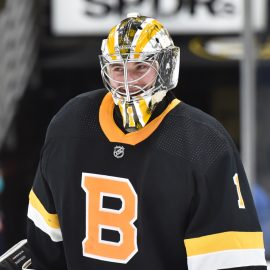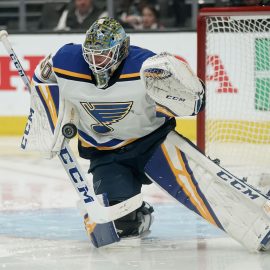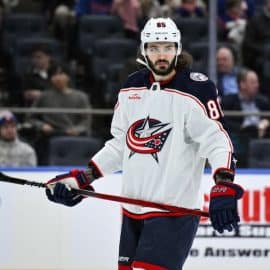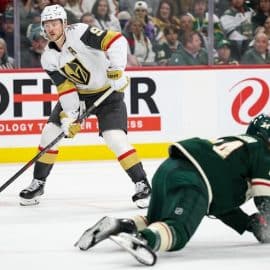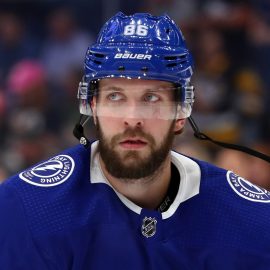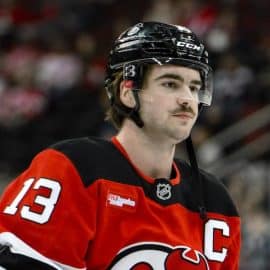When it comes to the Ottawa Senators’ roster construction, there is one easily identifiable problem: there is a shortage of good players playing in the prime years of their career.
NHL aging models project that the modern prime years of a player’s career occur between 22 and 27 years of age. On the Senators’ present roster, forwards who fit this measure include Colin White (23), Chris Tierney (26), Nick Paul (25), Alex Galchenyuk (26) and Filip Chlapik (23). Of that group, only Tierney and Paul have been regulars in the lineup. On the blue line, Thomas Chabot (23), Christian Wolanin (25), Mike Reilly (27) and Josh Brown (27) qualify.
The only player from this list of names who the Senators drafted that has fulfilled expectations to become a productive and consistent performer is Thomas Chabot. Nick Paul is a great development story and he is one of the brightest lights in what has been a dismal start to the season, but he was never drafted by the Senators. He was acquired as part of the return from Dallas for 2014’s Jason Spezza trade. And from a development standpoint, it feels awkward to give the organization a ton of credit when Paul was mismanaged for a few years under Guy Boucher and cleared waivers as recently as February of 2019.
In fairness to Colin White, Christian Wolanin and Filip Chlapik, I like all three players and there is still a ton of time for them to prove that they can be good NHL players. With the way they have been managed early this season however, one has to wonder if any of the three will be long for this organization.
Of the 27 draft picks from the 2012 through 2015 drafts, what we are left with is Thomas Chabot as the lone example of a player that has panned out.
The Senators have drafted players who would go on to become NHLers.
Cody Ceci has become a punchline in hockey’s social media circles, but he more than 500 games of NHL experience. Like Ceci, Chris Driedger was also from Ottawa’s 2012 class, but he appears to have established himself as a quality netminder down in Florida. The Senators’ remaining five picks from the 2012 draft have never played for the organization, but the Senators do maintain the rights to Mikael Wikstrand. The left-shot defenceman is currently playing for Ak Bars Kazan of the KHL.
The 2013 class was headlined by Curtis Lazar. The Western Hockey League product was lauded for his character and intangibles leading some to project him future-captain material. Unfortunately, Lazar’s greatest moment on the ice for Ottawa was picking up and taking a bite out of a hamburger that was thrown on the ice following a win during the team’s ‘Hamburglar Run’ in 2015. Lazar’s barely played above replacement level in his 292 career games. Marcus Hogberg was taken with the 78th overall pick in the third round and he has graduated to Ottawa’s roster. Hogberg appears to be bookended as a short-term backup solution in Ottawa thanks to this summer’s Matt Murray acquisition and the praise being bestowed on some of the goaltending prospects within the Senators’ system. Tobias Lindberg, Ben Harpur, Vincent Dunn (the wrong one), Chris Leblanc and Quentin Shore rounded out the rest of Ottawa’s 2013 draft and all proved to be inconsequential pieces.
In 2014, more inconsequential pieces.
The 2015 class was headlined by the aforementioned Chabot and White. While Chlapik, Wolanin and Joey Daccord will have opportunities to prove they can help this team, prospects like Gabriel Gagne, Filip Ahl and Christian Jaros are already gone from the organization.
There are obvious ebbs and flows to draft classes and not every selection is going to fulfill their projected ceiling, but it is impossible to ignore how these draft classes and some significant roster mismanagement have helped create a sizable talent hole on the parent roster.
Maybe things would be different if the organization actually had confidence in Mika Zibanejad’s ability and recognized that a contract extension would be worthwhile. Or better yet, instead of acting on the idea that Mika was not as committed to hockey as he had to be to enjoy success, do whatever is within your power to help him understand how to get there.
A mentor like Daniel Alfredsson would have been vital for continued development of Zibanejad and Erik Karlsson, but the organization double-downed on Alfie’s departure by pulling the trigger on a Bobby Ryan trade to generate positive PR and placate a fan base fuming over ownership’s role in the loss of their captain. Rather than acknowledge some obvious red flags that the team was not particularly strong and use the loss of Alfie to strengthen a decision to continue stockpiling young talent, the organization lost a good and inexpensive depth player in Jakob Silfverberg and a top-10 pick in the 2014 NHL Draft.
Losing quality players and leaders isn’t a new phenomenon, but to see players like Zibanejad or Mark Stone go elsewhere and not only thrive, but wear letters and develop into leaders stings.
It took a few mediocre draft classes and some roster mismanagement, but years of self-inflicted mistakes are finally bubbling to the surface. The end result is a roster laden with redundant veterans whose best days are behind them and a bunch of young kids that this team relies heavily upon.
Trusting Dorion
I was listening to the first hour of ‘TSN Mornings’ on TSN 1200 while driving early this morning. If you have not had a chance to listen to it, do it. Shawn Simpson and John Rodenburg discussed last night’s loss to the Canucks and the shortcomings of Ottawa’s front office.
It is not often that very public media figures have been critical of an Ottawa Senators general manager, but they took Pierre Dorion to task for the product that fans are enduring right now.
At one point in the conversation, JR asked Simpson whether Dorion should consider moving some young assets to help improve the team’s competitiveness.
It’s an interesting and pertinent question because we have often seen this organization sacrifice future assets to prioritize short-term competitiveness before. It happened frequently in the Bryan Murray era and we have seen it often in Pierre Dorion’s time behind the driver’s seat.
The bind that Ottawa is in right now is that the organization spent $20 million this summer and used two second-round picks to add leadership and talent. Even though some media personalities to remark that Ottawa had one of the best offseasons in the league despite a lot of analytic work indicating that the Senators did not add much value.
Most of the youth looks promising, but the veterans they did add simply aren’t good enough. Red flags existed at the time of these moves and through eight games, it feels like these concerns are now being realized. Fortunately, most of Dorion’s additions are on short-term deals and should not be around long.
But, the lingering uneasiness facing most Senators fans is, how does this team get better talent while the young kids develop? Why should anyone trust Dorion and his pro scouts to make smart hockey decisions when their history of “hockey trades” designed to make the team more competitive often blow up in the team’s face?
And if you can’t trust Dorion to make moves to improve the team without undercutting the moves he made to stockpile young depth, what options are left?
The best thing that he can probably do is double-down on youth. At this point, we know the veteran depth is underwhelming. What we don’t know is how good pieces like Erik Brannstrom, Logan Brown or even an Alex Formenton can be. Rather than roll the dice on bad veterans, maybe it would be in his best interests to clear room for more kids. At the very least, if they play well, Dorion will put himself in a more positive light because he was the one who acquired said youth.
Add The Sports Daily to your Google News Feed!
